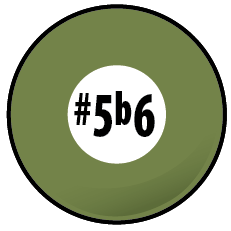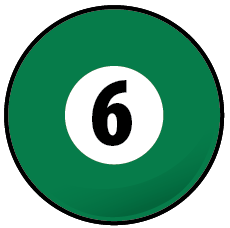|
|
"Just because it's improvised doesn't mean it's not a legitimate composition." |
wiki ~ Julian Lage |
Improvisation nut ... 'over or thru the changes ?' For purely academic this e-book learning of a potentially way complex topic, improvising is usually thought of in terms of two basic theories; we improvise melodies 'over' the chords or 'through' chords and their progressions. Academia gives way to creating musical art for sure, as everything is in full on merge mode go. But in the shedding, and surely in theory, this dichotomy flattens out the learning curve by using the three part bridge termed 'scale / arpeggio and chord.' Which once mastered through a couple of keys, gives us the various pitch combinations to seemlessly slide back and forth between improv's own Yin / Yang; soloing 'over or through' the changes. The 'over the chords' approach generally includes all of our styles and genres and thus is probably most common, mostly staying within the pitches of a diatonic key center. Improvising through chord changes leans us jazz, which has songs chock full of changes, each one a potential coolness to check out as we shape our melodic lines while moving through time and harmony. |
Mix the best of both; 'over and through.' Luckily today we have 100 years or so of great Americana musical / improvised art to admire, to study and even emulate, to get us closer to finding our own improvising voice. The trick is to be melodic; that our lines sound like the new melodies that they are; created on the spur of the moment while capturing the combined energy of the band and the audience. The tricky part in all this in regards to our academia leanings and learnings include; how to sound melodic improvising lines over a range of styles, which in our case here is 'folk through the blues into country rock and pop and into jazz.' There's the relative ease of soloing 'over the changes' with the pentatonic colors. And the challenge of arpeggiating the harmony in such a way as to sound melodic. For as we move along this spectrum and bring new pitches into the mix, the challenge of making up melodies ramps up and a combination of 'over and through' manifests as a sort of middle ground. And leaning more to jazz up any spot in the spectrum usually brings more chords and brighter tempos, thus additional pitches and sometimes additional key centers, further ramping up the challenge. Suggestions for strengthening the chops, creativity and a deeper knowledge of any instrument include; 1) We intuitively know when we hear an improvisor that leans towards playing melodically. Not sure why. Also, we all have our favorites, in the style we dig, artists that tell a story in their solos. When you find such gems, work them over so they go deep in your music soul, sing along with the solos note by note to then project that magic in your own ideas. 2) Play the melody and create variations. 3) Think from the root of each chord, begin by finding its triad notes, add a 7th to each chord for the blues, all through a song's progression. 4) Collect and play / interpret the pitches of melodies. Its what we copyright and the more melodies we get under our fingers, chances are our improvised melodies will convey the natural coolness of the artists we are. Cool ? |
'Improvisation' of any sort, just might be the most thrilling thing we do in life, 'a ha' moments of inspiration that 'win the day', with whatever our tasking. Improvisation in our Americana music styles is often just like our improvisations in everyday life; we're presented with tasks, challenges and even puzzles, that we enjoy to solve to completion. In all life, we solve those puzzles while moving through time, 'on the fly if you will', and in doing so ... life happens. |
With Americana musics, its 'moving through time' dynamic and the traditional ways our stories are told, the emotional nature of a song's story inspires us to create additional versions within its storyline. For as we each walk the walk, and talk the talk, as the saying goe'd, we each have our 'version' to tell. To tell with musical notes a joyous story, or sad or funny or profound story. In developing improvisational skills, we look to master the pitches, chords, rhythms, and their combinations, that enable us bring these core emotional qualities forth in our improvisations. We know what's possible from the musics we listen to, now our task is to get those qualities under our fingers. |
"A new idea comes suddenly and in a rather intuitive way. But, intuition is nothing but the outcome of earlier intellectual experience." |
So we can grow our intuitions to become better improvising artists by understanding these emotional qualities in the pitches and rhythms and how to sound them out. And as we develop our skills through practice build up a vocabulary of melodies and phrases we know by rote. We can learn how to recreate 'sad notes', the myriad of 'joyous fill the dancefloor rhythms', maybe even the 'hair stand up blue notes', notes, chordal colors and rhythms to portray longing, passion, reflective and rockin' in our musics. And that all through this lifelong learning process, new ideas come along, some will be all yours, ones that you invented and contribute to the collective muse. And for some artists, these are the ideas written into new songs. For we remember that ... |
"All music was once new." |
wiki ~ Karl Haas |
By necessity. When we go back into our early Americana history we realize that folks coming to the Americas had to figure out ways to get things done with what they had at hand; they had to improvise with what they had at hand. This inventiveness carries over to our musics; for it creates a unified quality of what each of the players involved might bring on any given day and must often by necessity, negotiate all of it together to bring the music forth. That 'necessity is the mother of invention' works for art too :) How true that ... |
|
"It always seems impossible until it's done." |
wiki ~ Nelson Mandela |
For advanced players. As one of the bookends of our music theory studies here anchors with John Coltrane, the advanced improvisor reading here has a rather clear 'theory' pathway to follow the harmonic evolutions that Coltrane followed to reach his own Parnassus. Start off on Five. One the more striking and consistent features of Coltrane's recorded soloing is a reliance to start off improvisations on the dominant note of the key of the music; so starting on the 5th note of the major / minor scale, the 5th note of the key center in a blues song or the dominant pitch in a key centered composition even when all 12 pitches are in play. Coltrane's interpretation of the 5th, the way he sounds, shapes and tones, and leans this 'dominant' aural force into what's happening around him in the band, becomes a consistently and remarkable aural capture of the 'dominant note's potency and potentials within really any grouping of pitches. As the dominant note is an aural force to direct the music through its harmonic progressions, to aurally 'herald' an event, to generate a sense of 'going', create the momentum and sense of forward motion while moving through time heading towards a sense of rest in resolution of tensions, regardless of where the band goes and how it gets there :) NYC artist Virginia Mayhew has a remarkable sense and aural ability of capturing Coltrane's dominant note tone and its magics in various musical styles / genres / tempos. The Octave leap. Also remarkable throughout the recordings of Coltrane's improvisations is the use of an octave 'leap', up or down (mostly down), during the sounding of a line. For example, over say a cadential Two / Five / One in 'C' major, running up to the leading tone 'B', then leaping down an octave to a lower 'B' before resolving to 'C.' Tricky at first, it creates that sensse of surprise, of a cat taking a chance while making the music up as time moves along. Cool ? |
A bit of improv history. In the jazz styles, which at one time was America's popular or 'pop' music, the historical role of improvisation is quite varied. Initially evolving from the often fully written out 'ragtime' works of the 1880's, of which we have scores and piano rolls for study today, we see the emergence of the collective group improv of the dixieland styles of 1900. As things evolved over the next decade or so, from within this group format, we evolve to the featured soloist backed up by a rhythm section. We see this on into the 1920's or so and forward from there, as new 'stars' emerge, many of whom are strong improvisors. And with the help of the airwaves (radio), the recording business and making records and the making musical stars takes right off. |
|
Once in place, we then begin see the rise of the individual 'star of the show.' Louis Armstrong is among the first of these stars, and leading by example, set the standard for fronting a band, very often as a singer / interpreter of the words of a song followed by an improvised solo based closely on the melody. Backed by various rhythm section combinations, this format helps found our improvisatory Americana version of stating a theme (melody of the song) and then creating variations of it. What starts out as working over a melody will gradually come to include working out ideas from the overall form and harmonic structure of the chosen song. And from the one soloist format to multiple soloists from within the group; horns, bass drums etc. |
|
So once crossed, and we're into the 1930's now, the theme and variations basis for the improvising jazz artist is now augmented by creating improvised melodic lines based upon what is provided by the written chord changes of a song, i.e., exploring the harmonic structure of a song. So from this point forward and now into the 1940's, the prowess of the improvisor to find new coolness a bit beyond the written changes finds its own spotlight in show biz. The result? The gradual ramping up of the challenge of the written changes and an accelerated evolution of the theory surrounding chord substitution. 1940's Americana jazz ? Bebop. The eventual evolution of bebop in the 1940's, often thought to be our most challenging of musics to participate in. |
"Imagination is more important than knowledge." |
wiki ~ Albert Einstein |
A new way forward. In October 1939, jazz saxophonist Coleman Hawkins recorded "Body and Soul", a pop song of that era. And in his version, once the melody is stated in the first 8 bar 'A' section, Mr. Hawkins improvs the rest of the three minute track by improvising with arpeggios through the written chords of the song ... for TWO full choruses to complete the take. |
|
Once this recording hit the shops and airwaves, players further considered the 'storyline' aspect of the composition and realized that the chord changes of the songs they were performing could provide a new framework for their improvised melodies. For each jazz chord mostly has the full potential to include any of the 12 pitches as; root 3, 5 or colortone. |
Things, as then and now, 'haven't been the same since.' Within a few short years the 'race through the changes' was on and 'Bebop', among America's most advancing and difficult of the jazz arts to this day, becomes the 'new thing' over the 1940's 'top 40 pop' global airwaves. For some, the included Hawkins' transcription is a semesters (3 months) worth of work. Full understanding of this printed music's symbols is BA degree necessary basic for completion of the degree. Luckily, even though there's more notes involved, the logics of the theory are of course the same; key center, diatonic pitches, scale / arpeggio, chord etc. |
And for the listener? Those so inclined to dig more of our Americana improvisational history should consider viewing the the PBS series "Jazz." Created by master storyteller Ken Burns, this 10 part film series gives the viewer a perspective of our evolutions in musics, improvisations and the struggles of a society that is dealing with bringing its core principles of life, liberty and the pursuit of happiness to all of the peoples who inhabit this great country. |
|
Composing a solo. In composing an improvised solo, all of our work developing our music skills comes together to showcase our ideas in creating aural art moving through real and measurable time. For beginning artists reading here, play 12 bar blues and master the form and basic chord changes, find your mojo lick and organically grow from there. These skills translate into the chops to merge into performance formats with like minded cats. |
Not sure of the right words here to describe this process of composing or building a solo but suffice to say that those that develop these skills to whatever level, enter into a creative realm that knows no bounds of personal joy and range of expression, a joyous sharing of energies with our fellow musicians and those who love to dance, listen and dream along. |
In the improv discussions included within Essentials, we simply begin to look at the various nuts and bolts of improv, what we might need to consider as improvising artists. We build up a personal understanding and strengthen our chops to then get with like minded artists and create. For many of us, it's the coolest of the cool :) |
Working out a solo 'story' for performance. Another common approach for our composing / improvisations with the theme and variations basis is to follow a more classical model, whereby in the writing and arrangement of a song, the 'variations' section, our improvs, are fully composed also, 'written out' is a common slang term for this approach. In this method we get to create the best possible solo / variations we can imagine for a song and play it every time we call the song. And whether actually notated or not, we then rote memorize the part and play it the same way every time. Depending on your style, recordings, audiences, gigs and your touring for performance and promotion of your work, this has been shown to be a super sure way to the top. While this sounds like some serious work, and it is, deep rewards can await those who follow this disciplined pathway. |
Preparing to play. Do remember that in preparing this way we get to create the best possible 'variations' on a theme we can devise, then simply rote learn it for performance. And since it is ours, these worked out solos can easily and naturally evolve over the years as we as artists evolve. We can work out all the tricky spots of fingerings, create any number of surprises etc. And in this creative process, real good chance that ideas for new works will also appear. So really just a slight twist to the improv process that allows us to create and express. These 'worked out' solos can evolve, be improved upon or even 'corrected' by the composer as time goes by and their art evolves. For if we compose it then we own it yes? |
Copy the masters (we all do). Another approach along these lines is to learn the solos of the master players we each dig the most. Historically this is the way we pass along the language from generation to generation with its evolutions. Players often get their first 'break' in the business by this rote learning of another's popular solos. That we also 'borrow' ideas from really any source and then make them our own over time, is what we've all done to evolve our thing. Listening is the key here. Reading the biographies of our recognized monsters will almost always reveal the shedding done to achieve their excellence. Explore :) |
|
Style / a quick improv assessment. So, what if the style of music you love to listen to, perform and improvise on only grants you a 'four or eight bar break' every once in a while? And yet maybe you want to really 'crush' those eight bars when they come along? Best to probably work it out as described above. Looking to step on a pedal and shred for a couple of minutes till the sweat pours out of the dancers? Then in addition to working things out you'll probably want to consider building up a solo too. |
A blues artist? Is your goal now to strengthen up your skills to improvise two solid, consecutive choruses of 12 bar blues, with a solid storyline and build for a solid climax each time you solo? A jazzer? Is your goal to extend the length of your solos to three, four, five or more choruses of rhythms changes? Go strong through a full chorus of a 32 bar jazz standard, chock full of sequenced changes and possible chord substitutions? Or do you dig jamming along on a vamp that is structured to go on and on and never really end? Or find or create progressions that encourage us to gradually evolve and journey to wherever our collective Muse reveals? |
Muse on all this a bit about what your goals and artistic needs are now and where you want to go. For even though 'all roads lead to Rome', some of them might get us there quicker than others :) So a bit of true artistic, inner personal search, then focus up and create a path to success. Improv is about being prepared by knowing your music and what role improv takes within it. Then tailor your shedding to max for these moments. |
|
Intermediate and beyond. For those theorists along in their improv studies there are two similar sections to explore that advance the improv challenge through the harmony. These are; 12 bar blues chord substitutions and the chord substitution, modulatory properties and modernizations associated with the properties of V7b9. If these ring a bell or raise some curiosity, click on over to explore or hang hear for more options. |
"Improvisation, being truly in the moment, means exploring what you don't know." |
wiki ~ Herbie Hancock (from NYTimes; May 3, 2023) |
Easiest way to begin. For brand new cats, lots of ways into this improv theory business really; a lot depends on the styles you dig and aspire to play as there's a wide variance to the degree of improve through our spectrum of Americana styles. Easiest way into all this? Old as the hills. Find the pitches of a melody that you can already sing on your guitar. |
Just rough out the pitches one by one, then the rhythms or vice versa depending. First to get the melody and its 'true nature' going along and then go deeper ... and find the nuance of your vocal ideas on your git, get your guitar to sing right along with ya. Stop and read that last bit a gain please. That for some reading here this might be all the improv theory ever needed, for it's how it all usually begins anyway. For chances are once you learn the line solid you'll end up just naturally hearing ideas that go right along. Stop and find these pitches, these are your first improvisations. Find another melody you dig and repeat the process. Then another etc. Remember that when we get to perform your songs, someone will probably need to play the melody :) |
Formal music school. While attending formal music school there was a weekly class called jazz improv with Dr. Miller. Jazz improv was set up as a jamm session in the band room run by the good Doctor. Mostly horns, there was a rhythm section with Doc on guitar for backing the soloists with changes. We'd read the melody down, then each in turn took a chorus improvising over the form of the chosen song. |
|
Calling jazz standards, Doc had the 'radar', his term for hearing the theory in real time, to hear the relationship of any pitch to any chord. Judiciously facilitating the academics of a jamm, Doc would if necessary stop a soloist to make sure they knew the pitch / chord theory at that point in the tune. Sounding the 'wrong' 3rd of the triad / chord ( major / minor ) was the most common, the 7th too ( major 7th or b7 ). |
Once the cat spelt the letter names of the chord, inevitably Doc would strum the chord and have that soloist sound out its arpeggio pitches, checking each with the chord. Once everything was straightened out, he'd count it off and back to it we'd all go. This process was repeated for each of us in class. |
Not too sure if and where these sorts of sessions are these days. Ask around your community and see if there's one about. Create one if needed with help from your school music teacher or area colleges, private teachers or knowledgable friends. Or teach yourself through conscious effort of wanting to get things right. You'll know soon enough when you decide to merge your ideas with other cats. In this way we become self correcting, the part of the magic of who we are. For we often learn more from our failed efforts than we do from our successes. Crazy I know but oh so true :) |
Hear the changes in the line. What this adds up to is to hear the chord changes of the music reflected in the improvised melody line of the solo. We called it playing 'inside the changes.' This 'inside' basis, along with a few other improv essentials, create the topics for the discussions that follow. |
The majority of the theory centers on the diatonic relationships of parent scale / arpeggio / chord. In this pursuit of the art of improv, we initially approach soloing 'over' chords with scales, or 'through' chords with arpeggios and then begin to mix them together. Motored by rhythms, these three musical elements constitute the basics of the theory for improv in this book. |
So with this in mind, select and explore directed by your own interests and curiosities or continue reading for more improv ideas. Pick and click and off ya go :) |
Numerical overview. So while music improv includes a lot of coolness to consider, here now as music theory scientists let's focus our initial investigations on the measurable elements involved with this general premise; that there's always melody pitches to be found tucked into a chord, there's always a chord or two to back a melody line and chords can be melodies also in either block chords or arpeggios. This is the basis of the roughly 300 year old style of compositional we've known all along as the homophonic style of music composition. |
|
We'll measure numerically by intervals, measure and label passing tones by scale and chord degrees and color tones all back and forth between these three groups of scales and chords. Thus, we get two 'sets' of pitches to create improv theory perspectives with; pitches arranged as scales or arranged as chords. Please examine these 'sets' of pitches for making melody and chords. In A major. Example 1. |
 |
'Farm livin' is the life for me' :) ... Easy and fun linear melody idea followed by stacked pitches as a chord. Melody style chord tones? An arpeggio? Yep. Simply sounding the pitches of the chord from bottom to top and back. Hear the chord's quality in the arpeggiated line? Thus, the basis for improv through chord changes. |
|
Review / that we improvise together. In a traditional styled performance of Americana musics, there are parts in the songs where we each get to bust out and jam to our own muse while the rest of the group provides a background for us to solo over. Mostly called 'improv' or soloing, even though one steps up to becomes a soloist, everyone else in the group is also still part of creating this improvised dialogue; through listening, supporting the soloist in musical and spiritual ways. |
Thus in our collaborative thought process of soloing and support we all get to improvise together. Is this part of the magic that has enthralled folks since it all began? It sure is. That a part of the music they are hearing is being made up brand new right then and there just for them makes it special. And for the dancers in attendance? Probably, for through their aural process they too can enter into this collective improv dynamic to improvise their own vision of the musical story being told through their body movement to the pulse of time. |
"What we play is life." |
wiki ~ Louis Armstrong
|
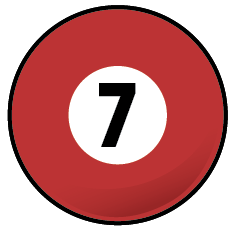 |
 |
|||||||||||
 |
 |
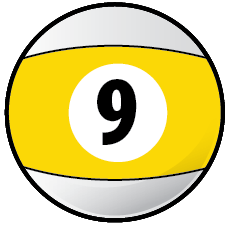 |
 |
 |
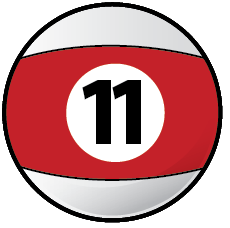 |
 |
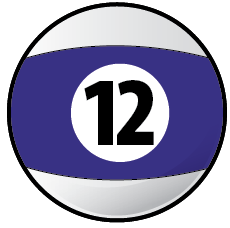 |
 |
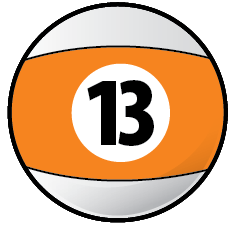 |
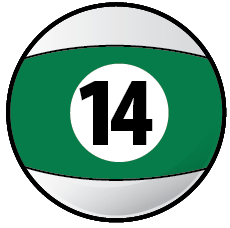 |
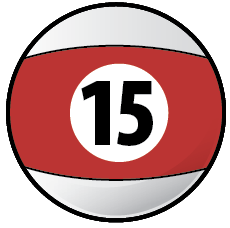 |
 |
References. References for this page come from the included bibliography from formal music schools and the bandstand, made way easier by the folks along the way. In addition, books of classical literature; from Homer, Stendahl and Laudurie to Rand, Walker and Morrison and of today, provided additional life puzzle pieces to the musical ones, to shape the 'art' page and discussions of this book. Special thanks to PSUC musicology professor Dr. Y. Guibbory, who 40 years ago provided the initial insights of weaving the history of all the fine arts into one colossal story telling of the evolution of AmerAftroEurolatin musical arts. And to teacher-ed training master, Dr. Joyce Honeychurch of UAA, whose new ideas of education come to fruition in an e-book. |
"Life is about creating yourself." |
wiki ~ Bob Dylan |
Find an e-book mentor. Always good to have a mentor when learning about things new to us. And with music and its magics, nice to have a friend or two ask questions and collaborate with. Seek and ye shall find. Local high schools, libraries, friends and family, musicians in your home town ... just ask around, someone will know someone who knows someone about music who can help you with your studies of the musical arts with this e-book. |
Intensive tutoring. Luckily for musical artists like us, the learning dip of the 'covid years' can vanish quickly with intensive tutoring. For all disciplines; including all the sciences and the 'hands on' trade schools, that with tutoring, learning blossoms to 'catch us up.' In music ? The 'theory' of making musical art is built with just the 12 unique pitches, so easy to master with mentorship. And in 'practice ?' Luckily old school, the foundation that 'all responsibility for self betterment is ours alone.' Which in music, and same for all the arts, means to do what we really love to do ... to make music :) |
 |
"These books, and your capacity to understand them, are just the same in all places. Always bear in mind that your own resolution to succeed, is more important than any other one thing." |
|
Academia references of Alaska. And when you need university level answers to your questions and musings, and especially if you are considering a career in music and looking to continue your formal studies, begin to e-reach out to the Alaska University Music Campus communities and begin a dialogue with some of Alaska's finest resident maestros ! |
|
Formal academia references near your home. Let your fingers do the clicking to search and find the formal music academies in your own locale. |
"Who is responsible for your education ... ? |
'We energize our learning in life through natural curiosity and exploration, and in doing so, create our own pathways of discovery.' Comments or questions ? |
Coda; start and end a solo. Like most things, there's a beginning and an end to the magic of whatever it is. In our Americana musics, where we often get to improvise our parts when making music, and these too have a beginning and end. And what happens in between these end points is what we are here to study. Starting off on a solo ? Playing the melody works fine. Ending a solo ? The melody is cool there too. In jazzy 12 bar blues, ending on the Four chord is cool. Get a jumpin' bluegrass smokin' eight bars? Start off on high note tonic or Five, and find a way down to One about eight seconds later :) Metal shredding ? Same mostly except for tone and faster :) Everything else ? The song's melody, or even quote another ? |
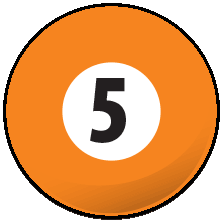 Five
Five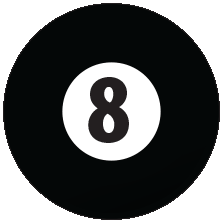 Eight
Eight







